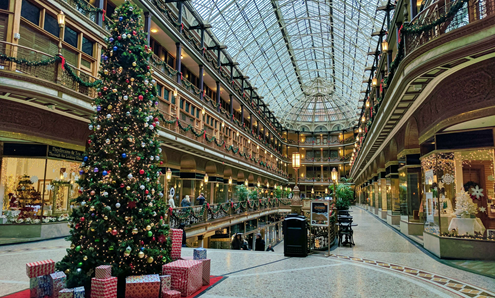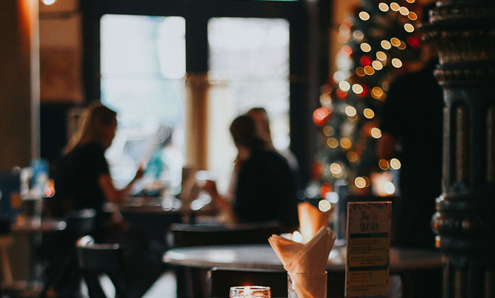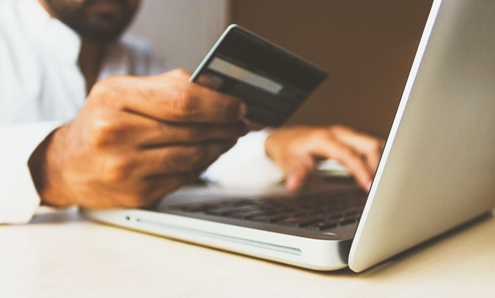How to get your customers to put more in their basket (in-store)
09 March 2021 | Published by Bryony Pearce
The aim of the game for most businesses is to make more money, and how do they do that? By making more sales. But how do businesses encourage customers to purchase more from them without coming across as pushy and overbearing?
Unfortunately, we don’t have a definitive answer but we do have is nine tried and tested techniques for encouraging customers to put more in their basket without sending them running for the hills with heavy-handed sales techniques.
1. Be knowledgeable
It’s super important both you and your workforce know your products like the back of your hand - it’s business 101, for example:
- If a customer is on the fence about completing a purchase and would like a bit more information, you’ll give them the nudge they need if you can effortlessly reel off all the details they’re after.
Being knowledgeable also helps when it comes to upselling, for example:
- If a customer’s purchasing a toy and you know it comes without batteries, you can politely inform them of this and point them in the direction of the batteries you sell. The child won’t be disappointed, the customer won’t pull their hair out, and you’ll have made more sales.
- Or, if someone’s purchasing a snazzy cardigan you could recommend the perfect scarf to go with it from your new range, highlighting your expertise and boosting sales.
Upselling in this manner isn’t pushy but authentic - you’re showing you’re knowledgeable and care about their satisfaction.
2. Promotions
Promotions are one of the most commonly used but effective methods for upping consumer spending. Techniques like buy one get one free, buy one get one half price, three for the price of two, etc. are oftentimes too good to refuse for customers, even if they only really need one - the thrill of the discount is alluring.
When it comes to deciding which items to discount or include in your promotion, consider your best sellers to really draw consumers in. If you know they’re popular then it’s going to make your offer even harder to turn down.
To increase awareness of your newer products or reach a wider audience for some of your less popular items you could include them in the offer alongside your bestsellers. So for example, if your butterscotch candles are flying off the shelf but the candyfloss scent is hardly shifting, you could pair them up for a special deal to boost sales.
There are two important things to remember when it comes to promotions though:
a. Do your homework before deciding what to put on offer and crunch the numbers to ensure it makes financial sense.
b. Put an end date on the promotion or state ‘while stocks last’ - it’ll remove any confusion, create a sense of urgency, and up the chances customers will scoop up the offer immediately for fear of missing out.
3. Remove barriers
Have you ever nipped into your supermarket for one thing and told yourself you didn’t need a basket? We’ve all been there, arms overflowing with things we forgot we needed or we just couldn’t resist.
But if your customers come in and pick up a few things without a basket, there’s a barrier stopping them picking more things up - lack of arm space.
You can overcome this by strategically placing your baskets not only at the door but around your shop - at the end of the aisles, for example, so that if they do decide they want to spend more there’ll be nothing stopping them.
4. Cross merchandise
You’ve probably seen this one in action before - items which work well together arranged on the same shelf or in close proximity. So for example, bread placed on the end of the cheese and meats aisle, or bottles of wine mixed in amongst the ready meals.
It’s a really nifty trick for encouraging additional purchases from consumers because you’re placing mental cues which trigger their decision-making process.
So, if you’re a bakery why not display some condiments next to your fresh loaves? Or for greengrocers, you might put fresh whipped cream next to your fruits - it’s the perfect opportunity to increase your customer’s basket size.
5. Product placement
When it comes to product placement remember to:
a. Make your items easy to find - if a customer can’t find what they’re looking for they might get frustrated and abandon ship altogether.
b. Encourage impulse purchases - let’s be honest, who hasn’t made an impulse purchase at the till? It might be a bag of sweets that catches your eye, or a discounted item placed cleverly on the counter, but if you nail your product placement you’ll undoubtedly boost sales.
According to product placement research, only one-third of instore purchases are pre-planned meaning you’ve got the capacity to treble consumer spending with careful product placement.
Studies into consumer behaviour suggest ‘eye level is buy level’ - items that catch consumers eyes are much more likely to elicit a purchase. So when it comes to your promotions and offers, be sure to place them somewhere shoppers can’t miss them.
6. Loyalty scheme
We harp on about the importance of building customer loyalty a lot on the takepayments blog, but it’s so important - research shows loyal customers are willing to spend more with businesses, and a loyalty scheme is a great way to foster feelings of just that.
Create a great loyalty scheme and your customers should feel like they’re a member of a private club - they’ll get early access to offers and promotions, and occasional discounts to reward them for their commitment to your business.
Sainsbury’s Nectar card is a great example of a successful loyalty scheme, boasting a whopping 19 million users and boosting the company’s turnover by 12% in one year.
A loyalty scheme could have your customers putting more in their basket and returning to do the same time and time again - their value shouldn’t be underestimated!
7. Be seasonal
Consumer spending skyrockets around seasonal celebrations and annual events, for example:
- Christmas
- Halloween
- Easter
- Summer holidays
- Back to school time
As a retailer, you need to make sure you get your slice of the pie and cash in on these spending frenzies. Use your product placement knowledge to position these seasonal items in pride of place and encourage impulse purchases by spend-happy shoppers.
It’s not just the big celebrations you can cash in on, but smaller seasonal changes too. For example, stock up on gloves and scarves as Autumn draws close, or put sun cream and ice-lollies in pride of place as temperatures begin to rise towards the end of Springtime.
The idea is to offer consumers what they need or want before they realise they need or want it at all. This mental cue will play a big role in eliciting additional and unplanned spending.
8. Position best sellers strategically
The more items in your store consumers lay eyes on, the more items they’re likely to purchase, so if you strategically position your best sellers throughout your store, shoppers will have to walk past other things they might not have thought about buying on their way to their favourites, and this can encourage them to put more in their basket.
So, take a look at your high trafficked items, what do shoppers most often visit your shop to purchase? Once you know what they are, spread them out across your store.
9. Payment
Last but not least, offering your consumers a variety of payment methods will impact their spending habits.
If you only accept cash, you limit consumer spending to what they’re carrying in their wallet. If you accept card payments, on the other hand, there’s no barrier to how much they can spend, and this ‘friction-free’ spending has been shown to increase transaction sizes.
Research reflects this, with studies showing shoppers often spend substantially more when paying on a credit card compared to cash.
So, if you want to encourage your customers to put more in their basket, be sure you’re ready to accept card payments.
A word of warning
Remember, these nine tips are designed to encourage further spending, but it’s never a good idea to try and ‘trick’ consumers into spending more, and certainly not to mislead them into parting with their hard-earned cash.
If a consumer feels duped there’s very little chance they’ll consider shopping with you again, so the short term gain will lead to long-term loss and could cause irreparable reputational damage when word gets out.
Want to start accepting card payments? You’re in the right place. We offer three market-leading card machines: countertop, mobile, and portable, and can have you up and running in no time thanks to our team of dedicated local consultants up and down the country.
To find out more about our machines or for help deciding which one is the right fit for your business, don’t hesitate to get in touch with our friendly experts today.





